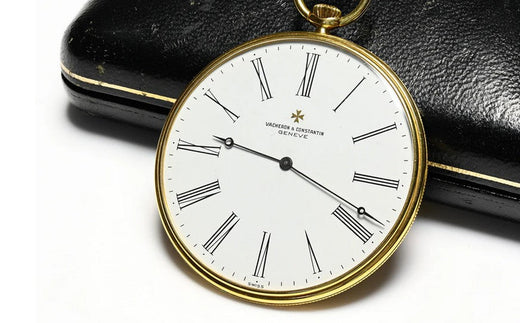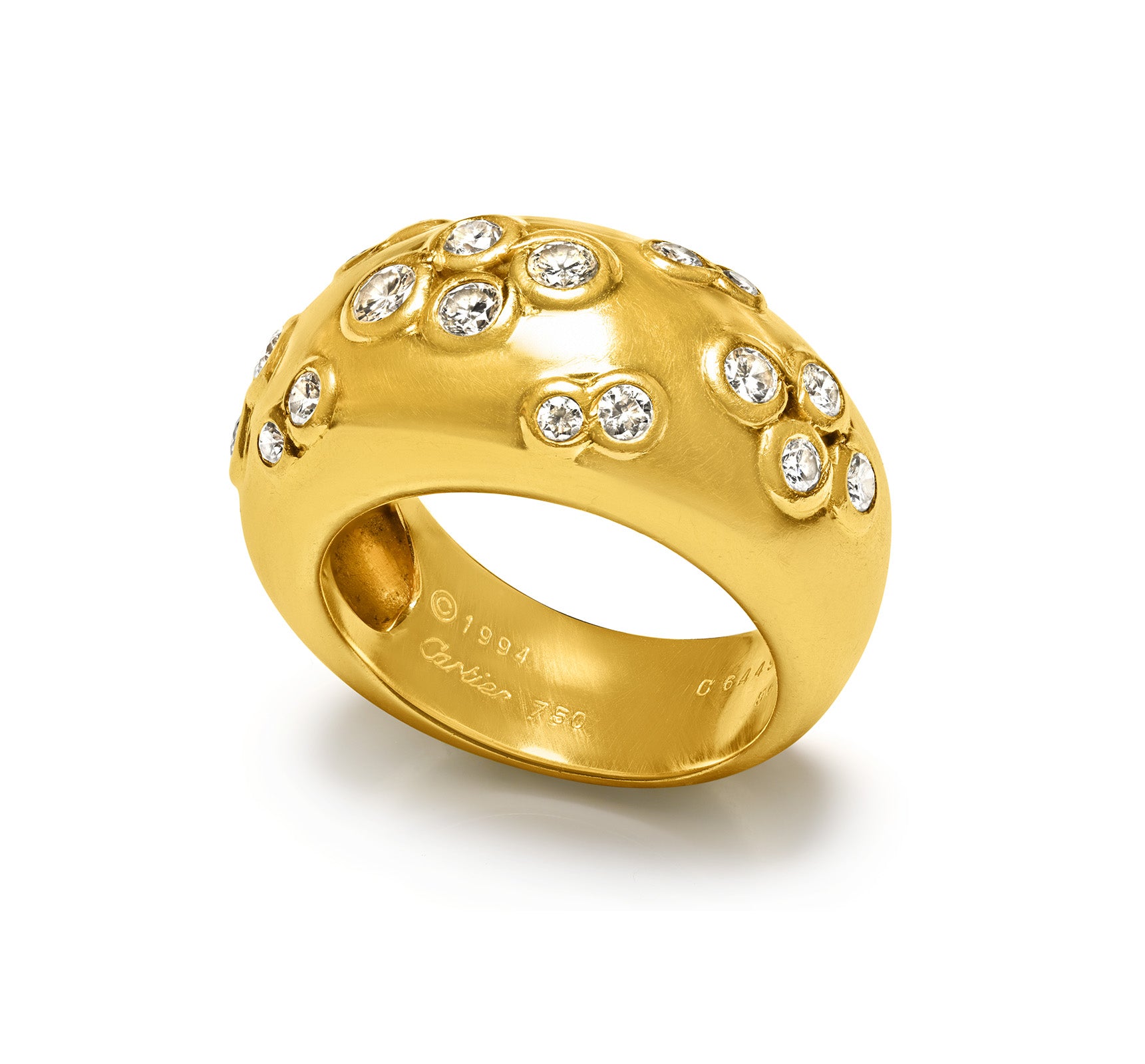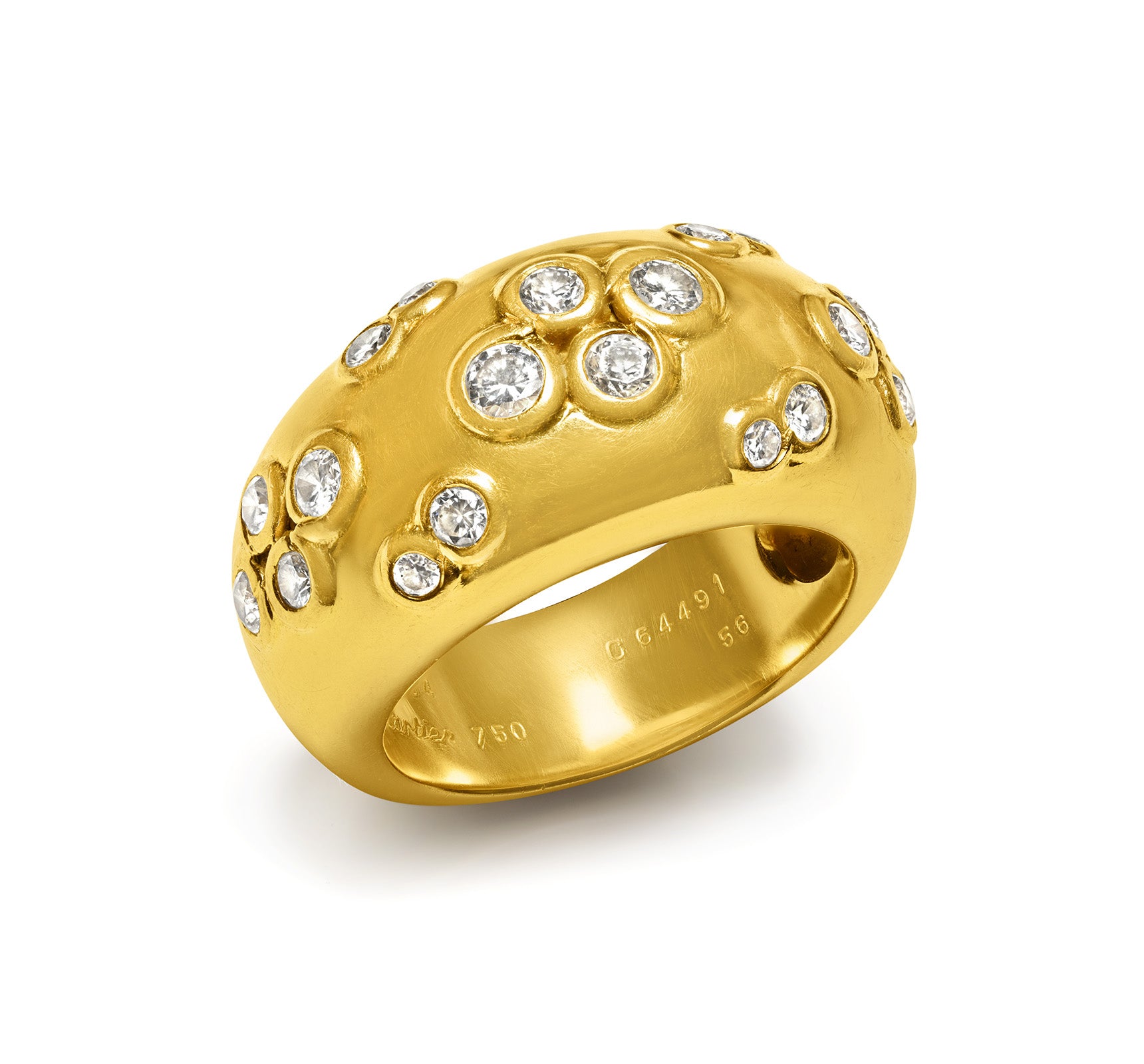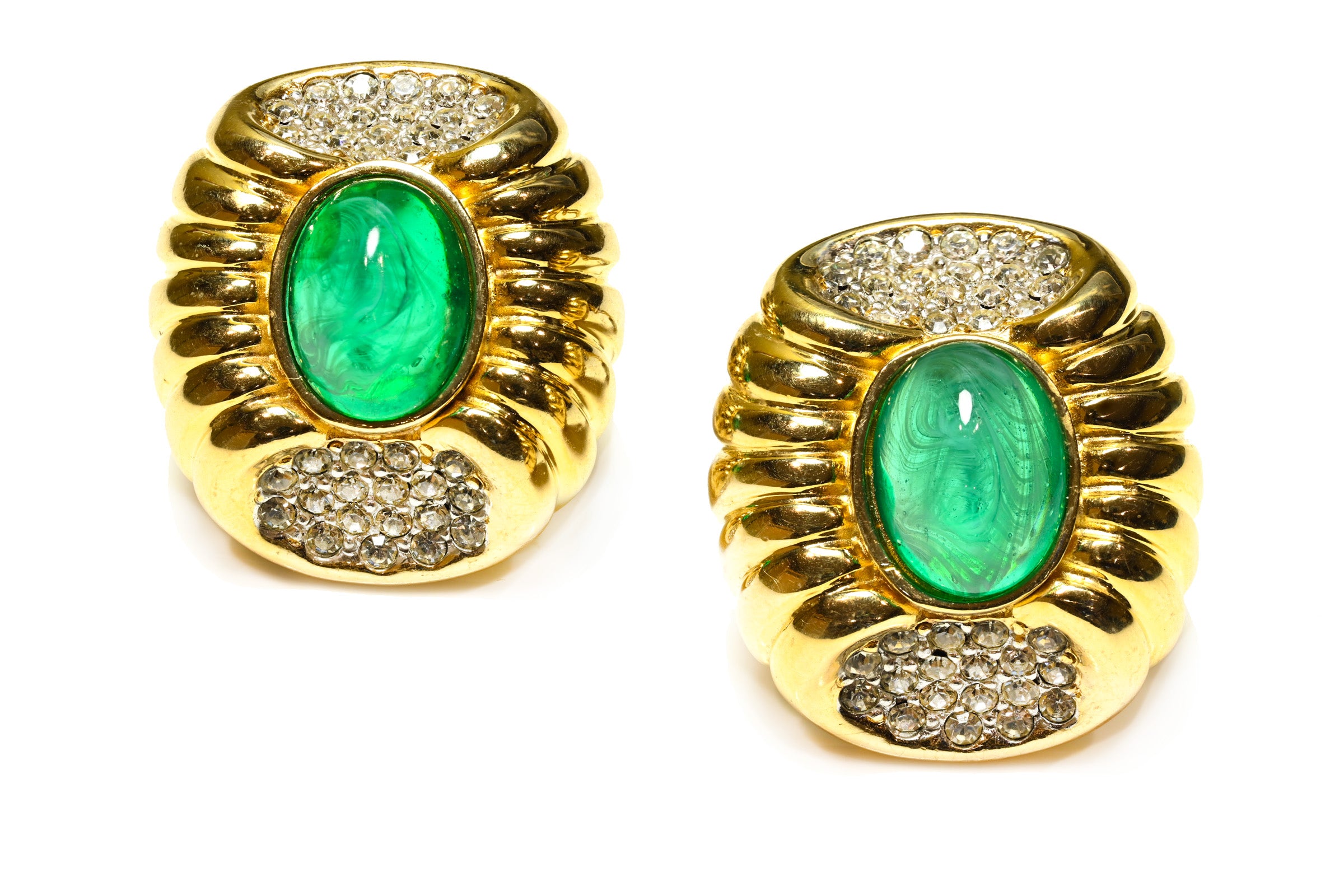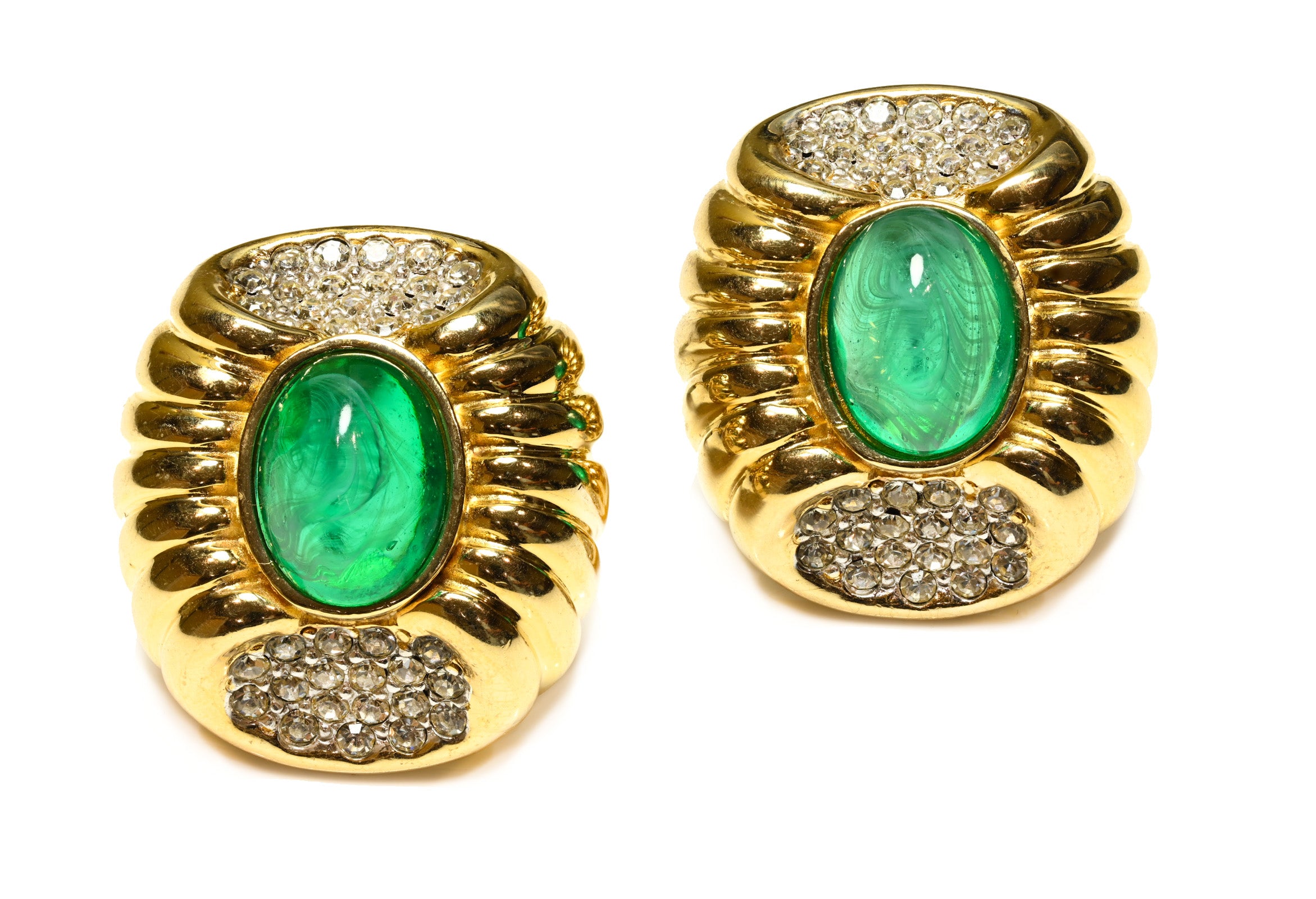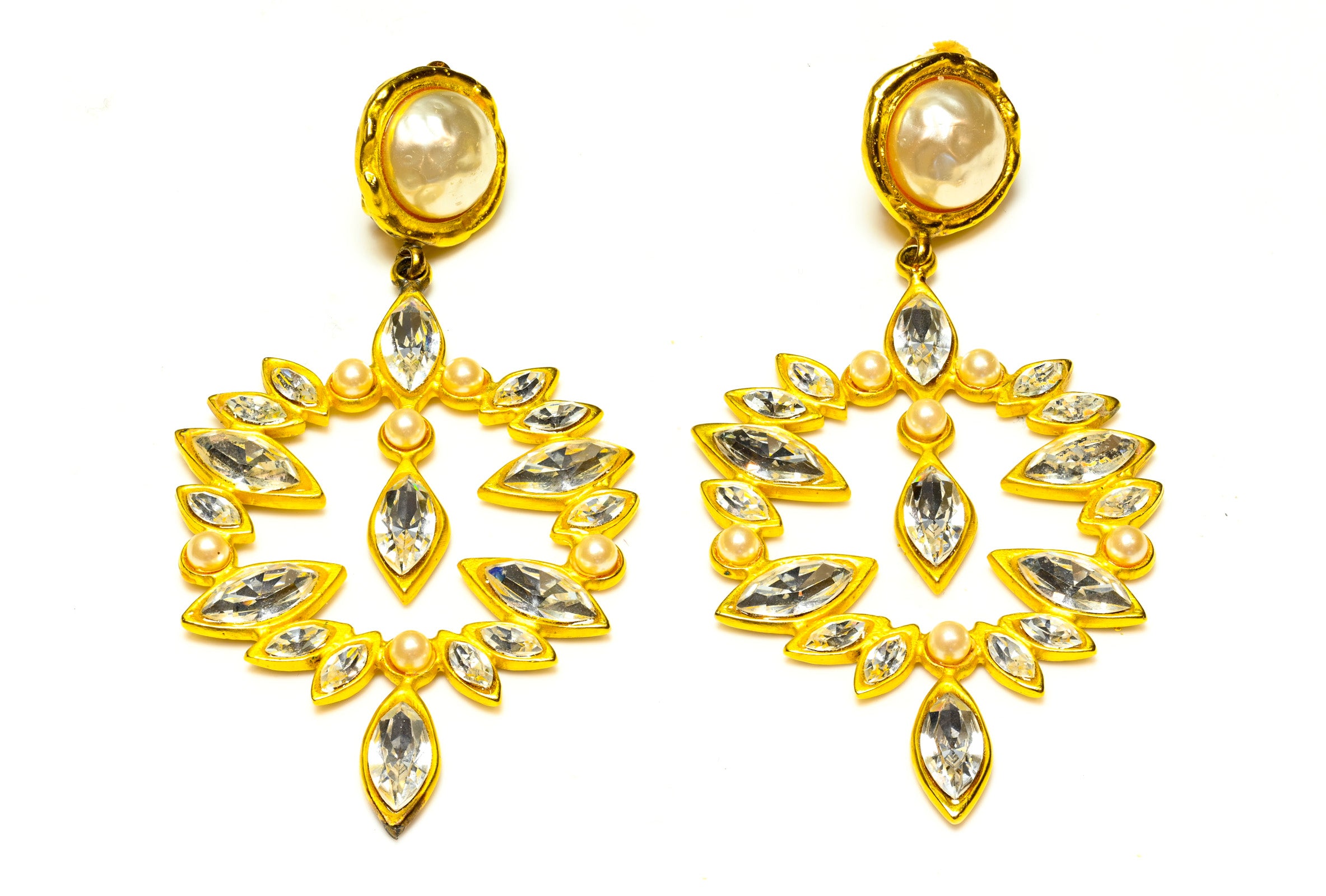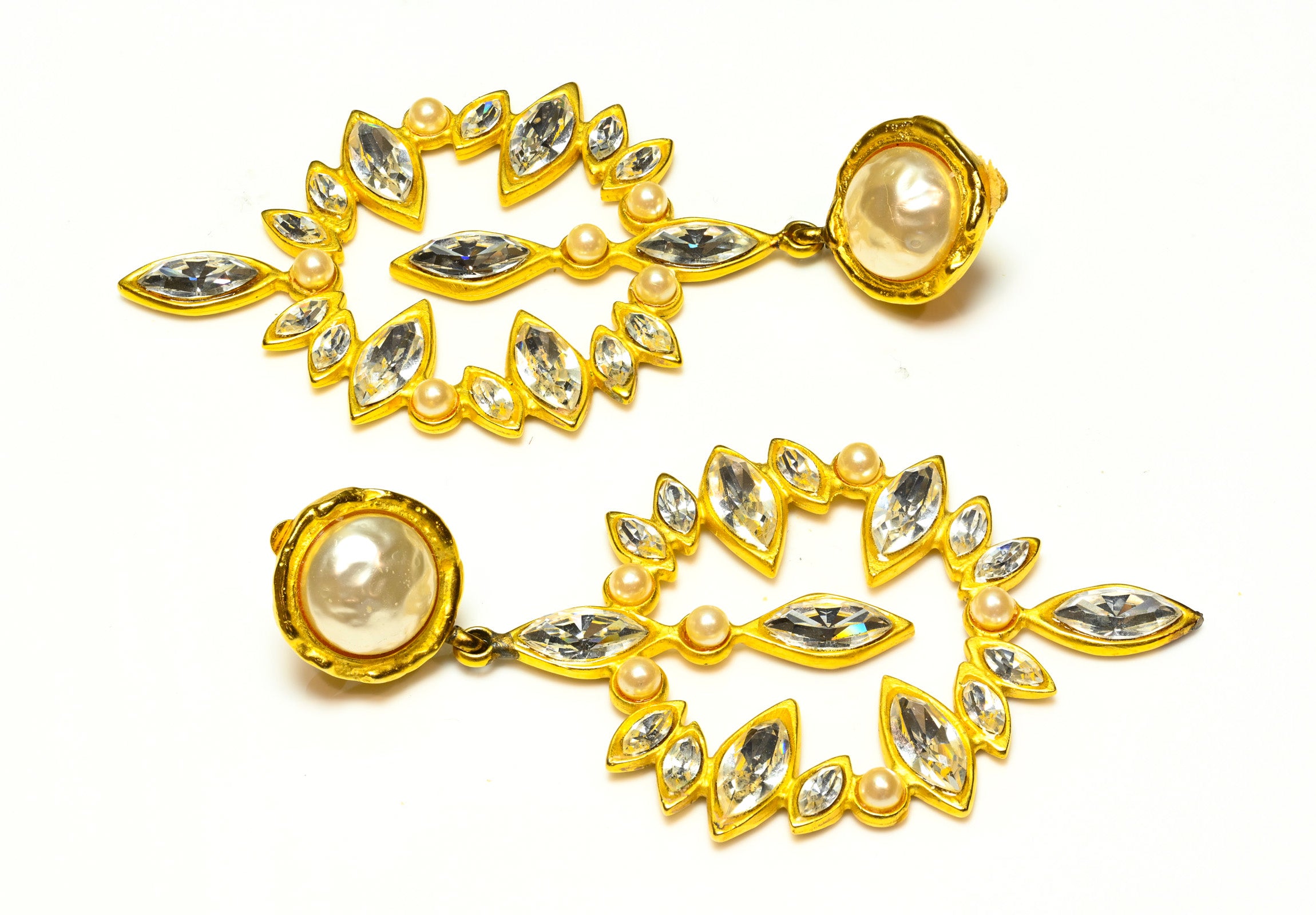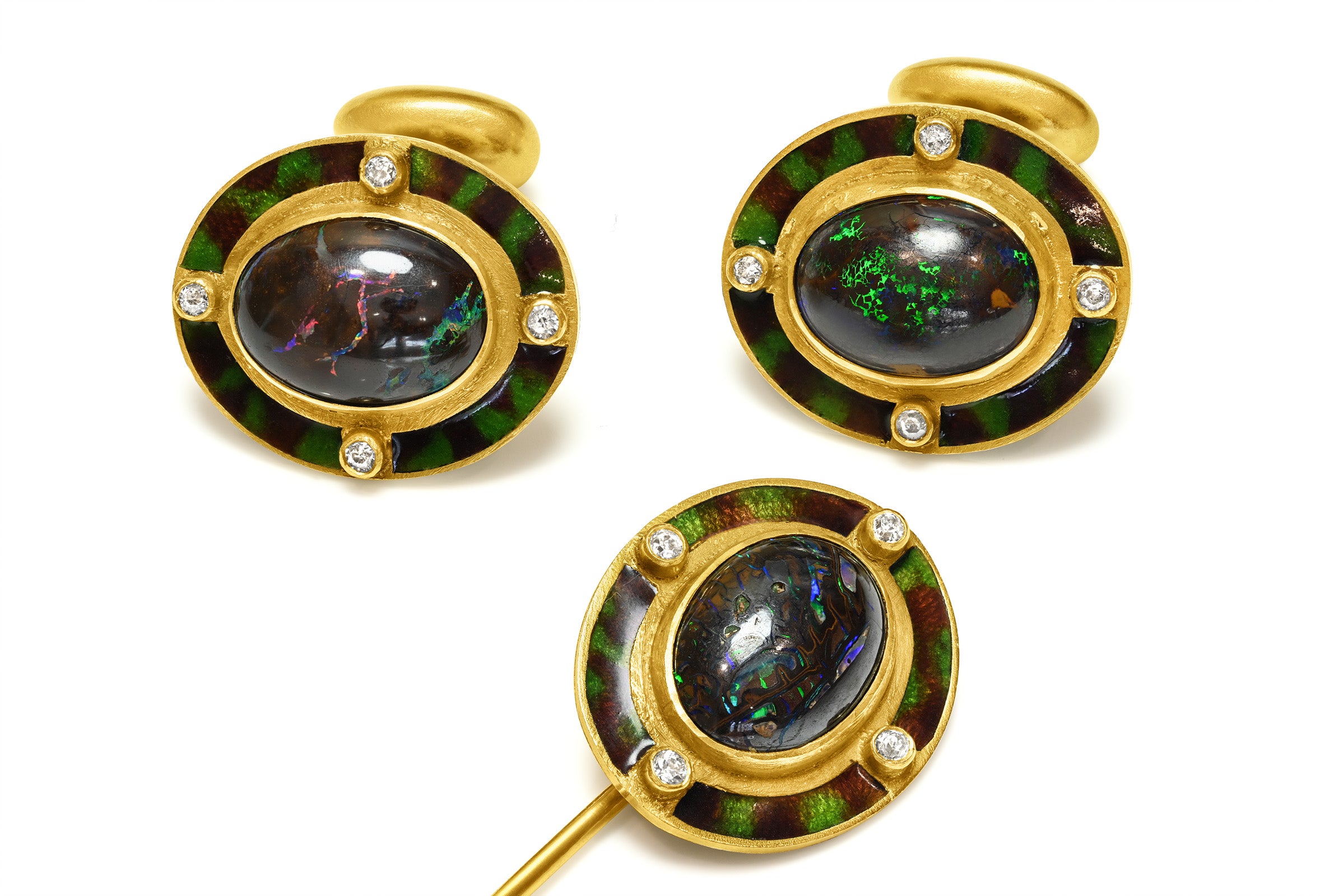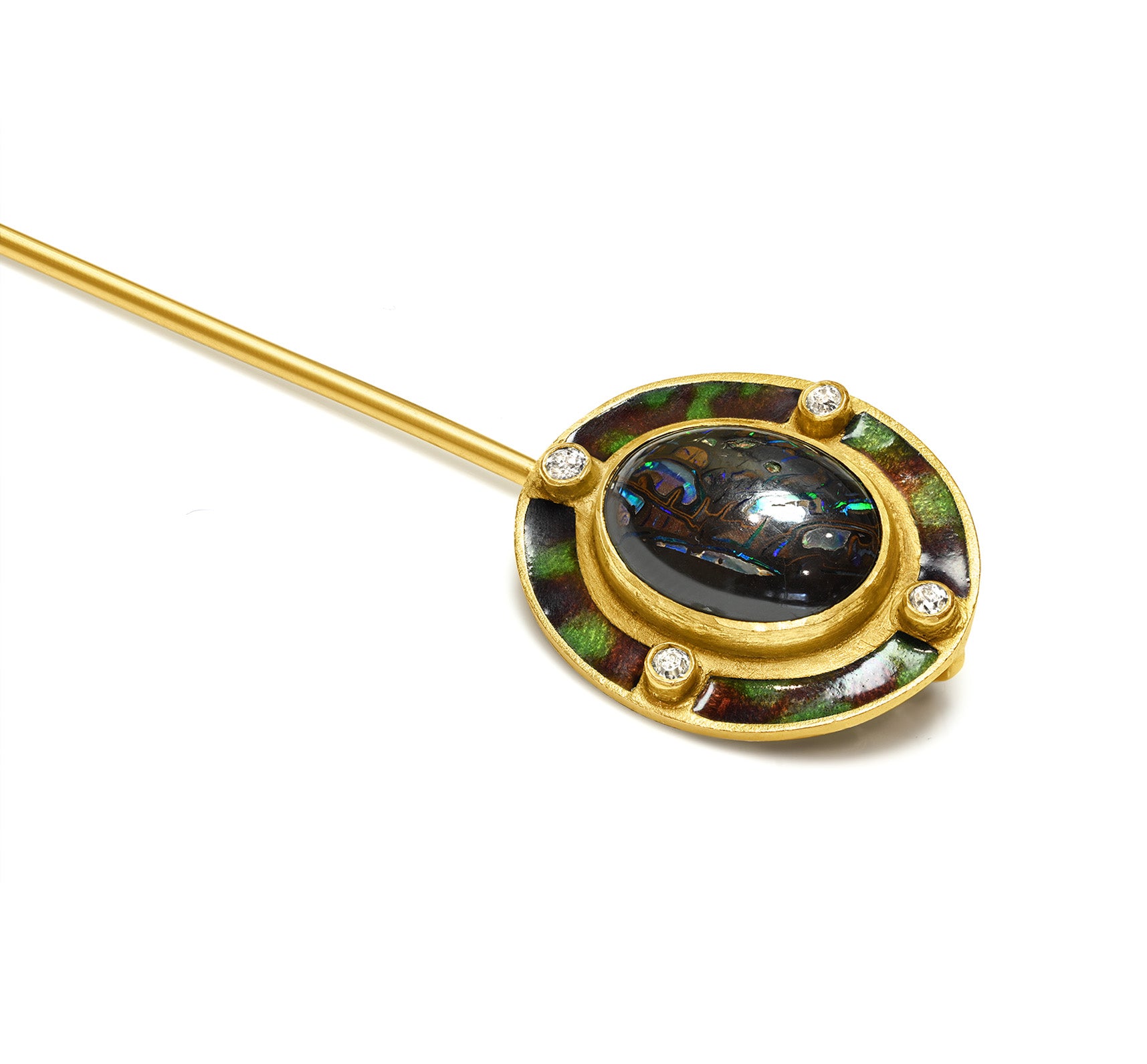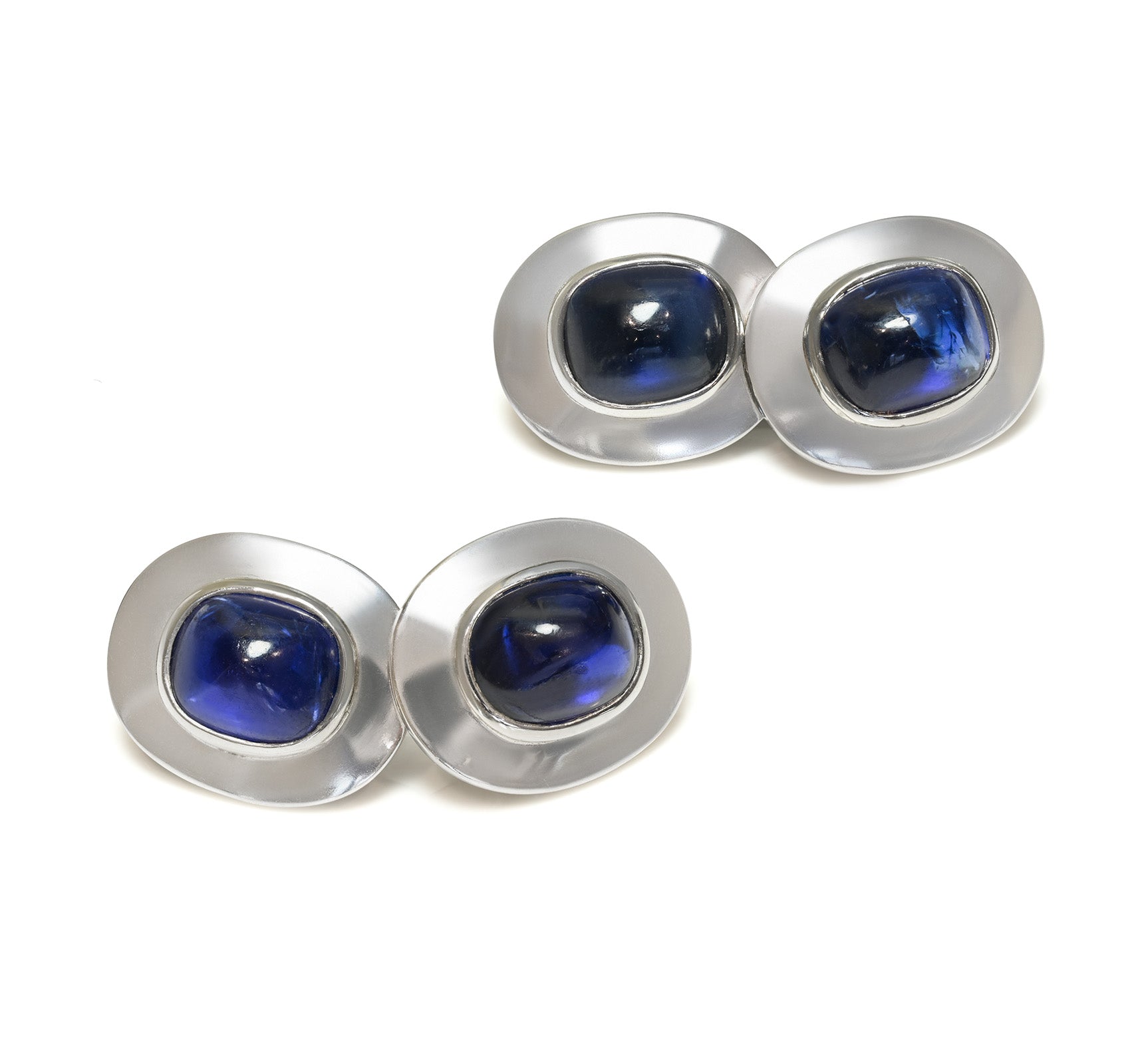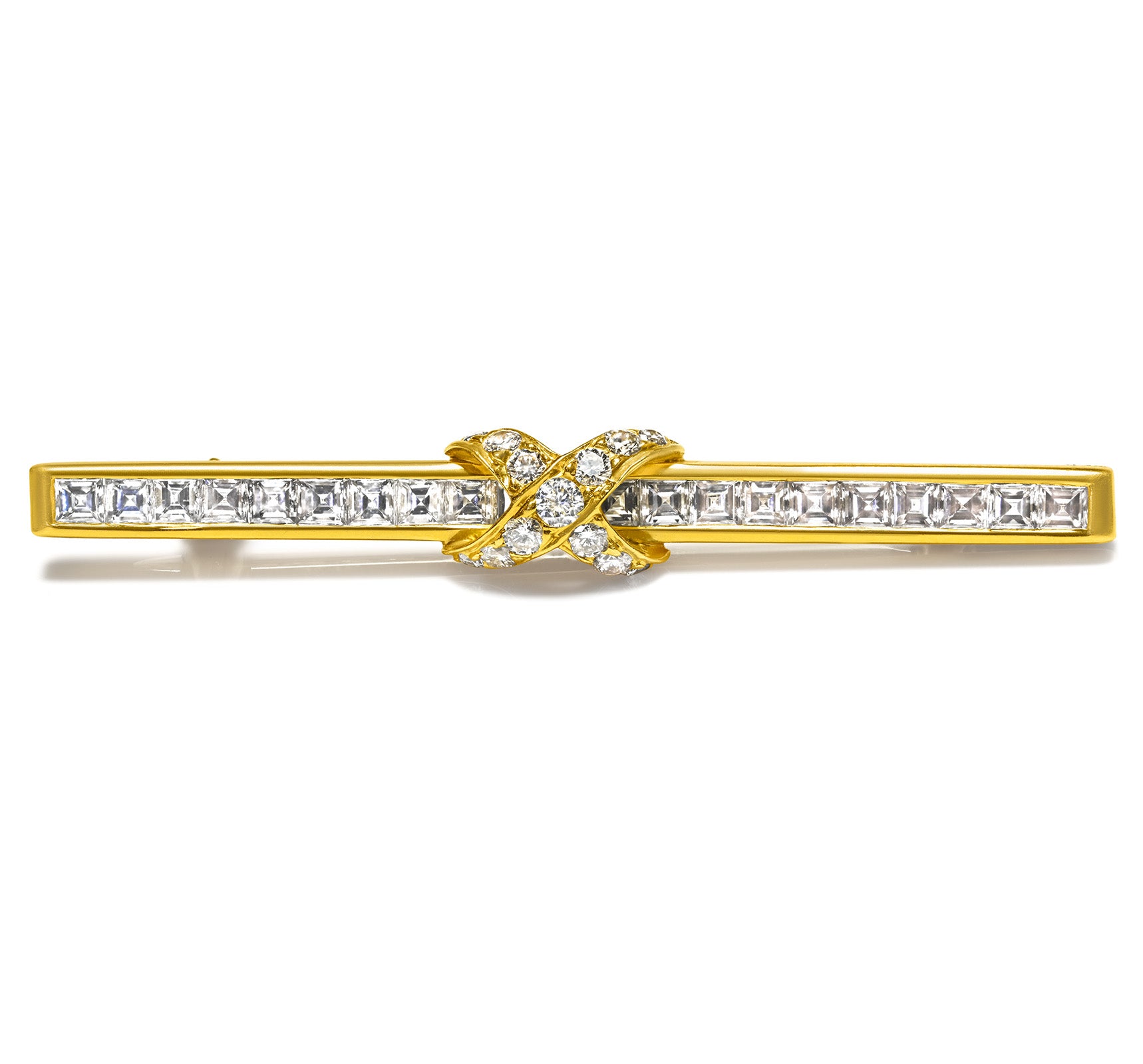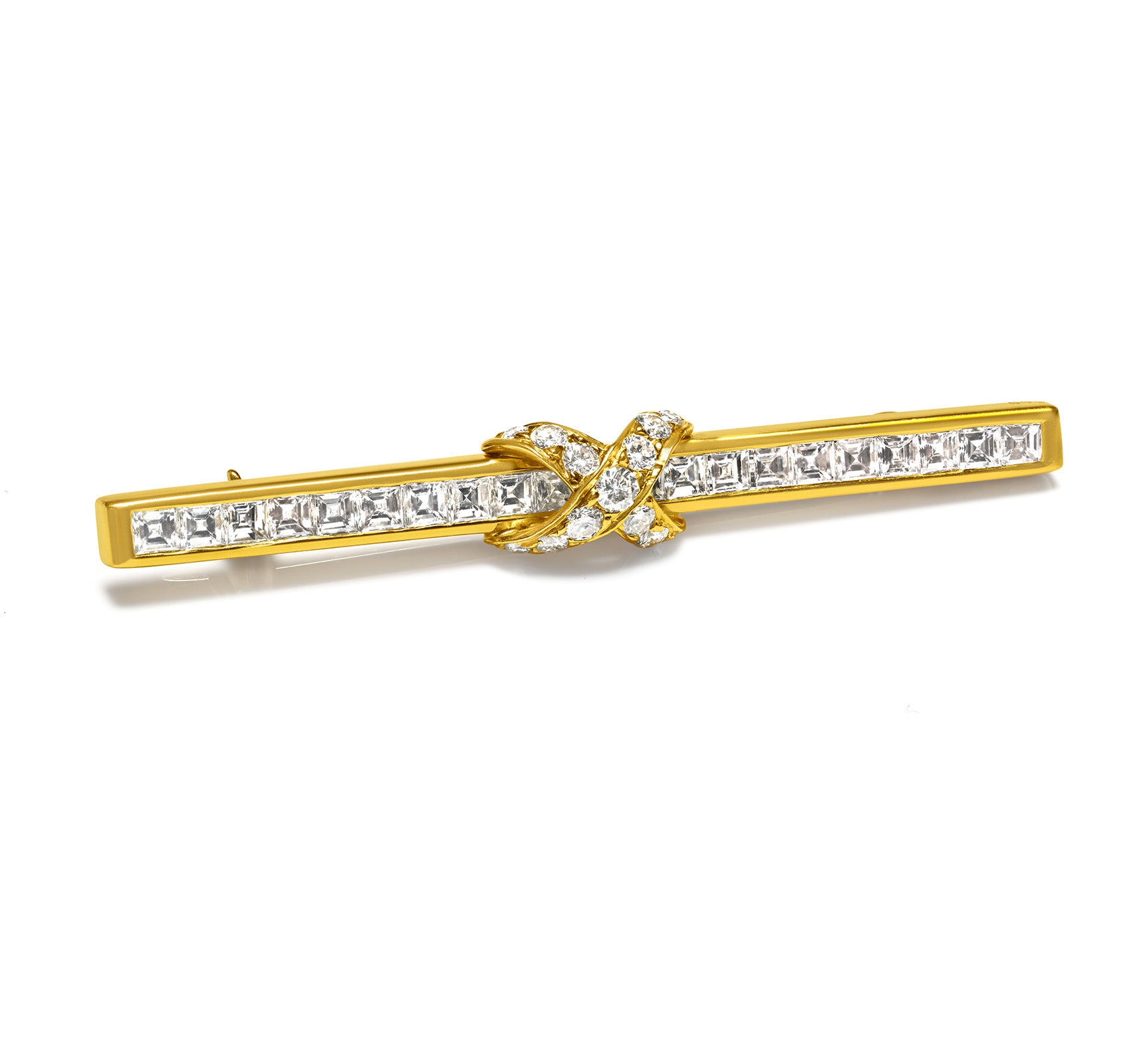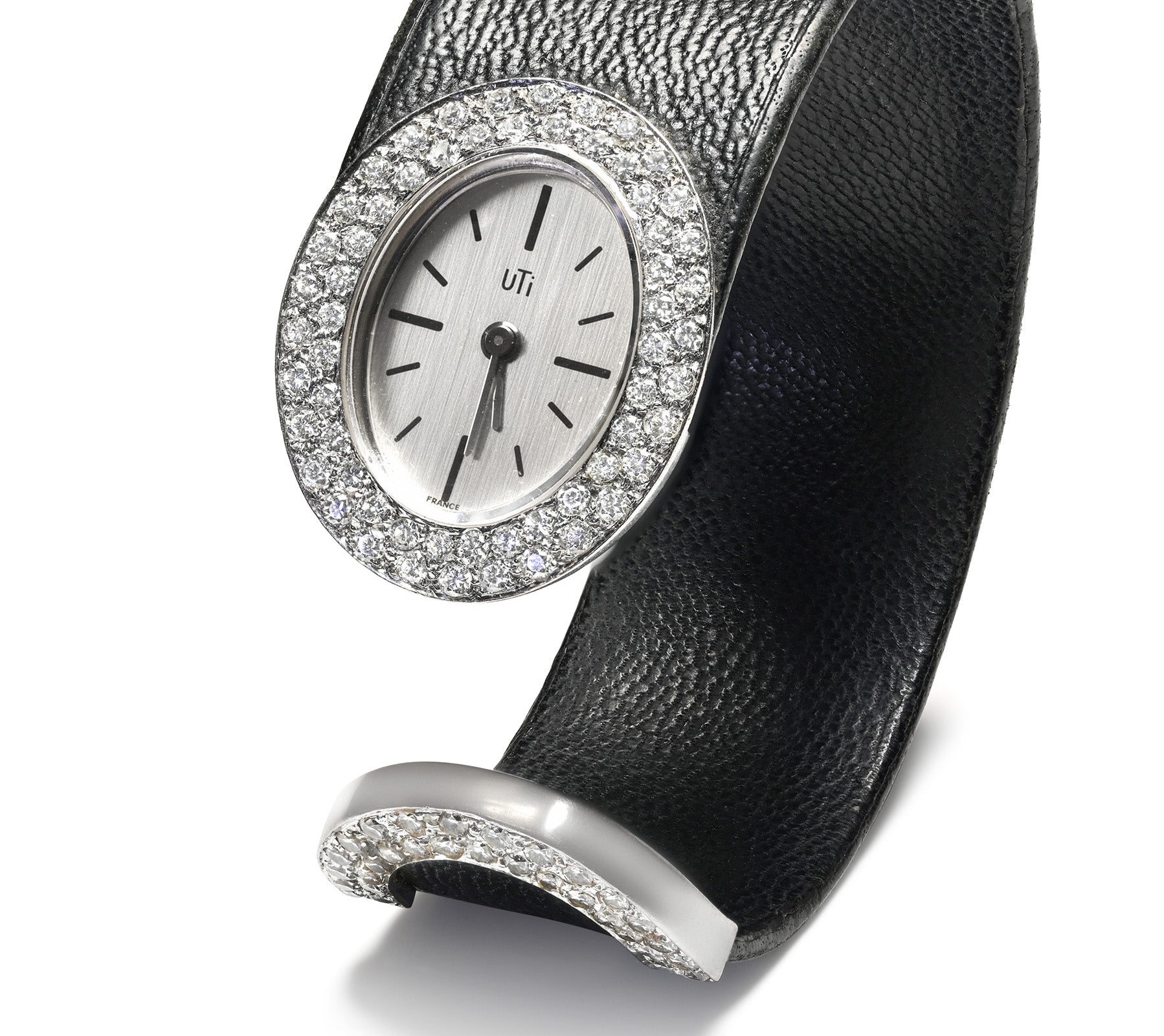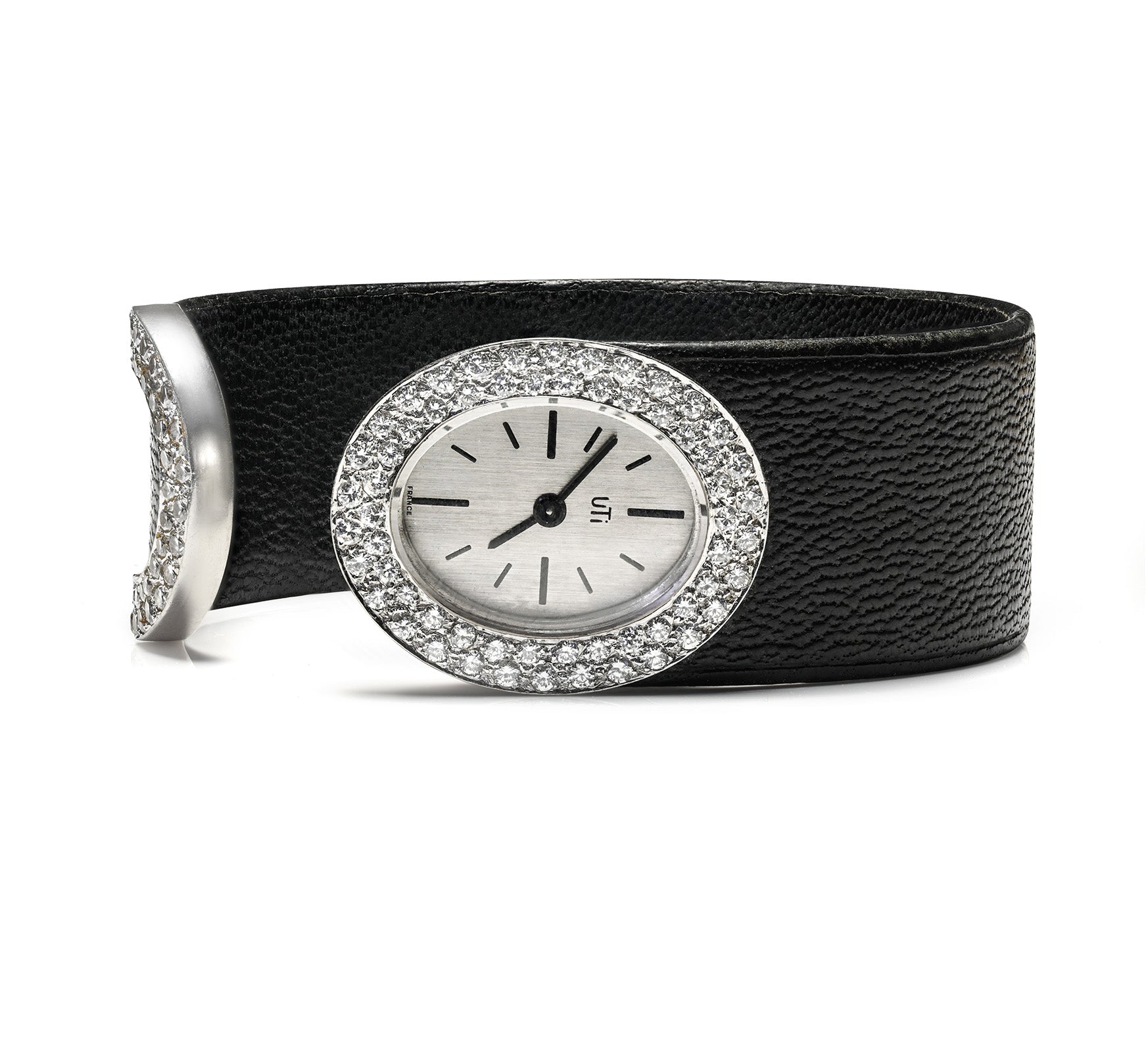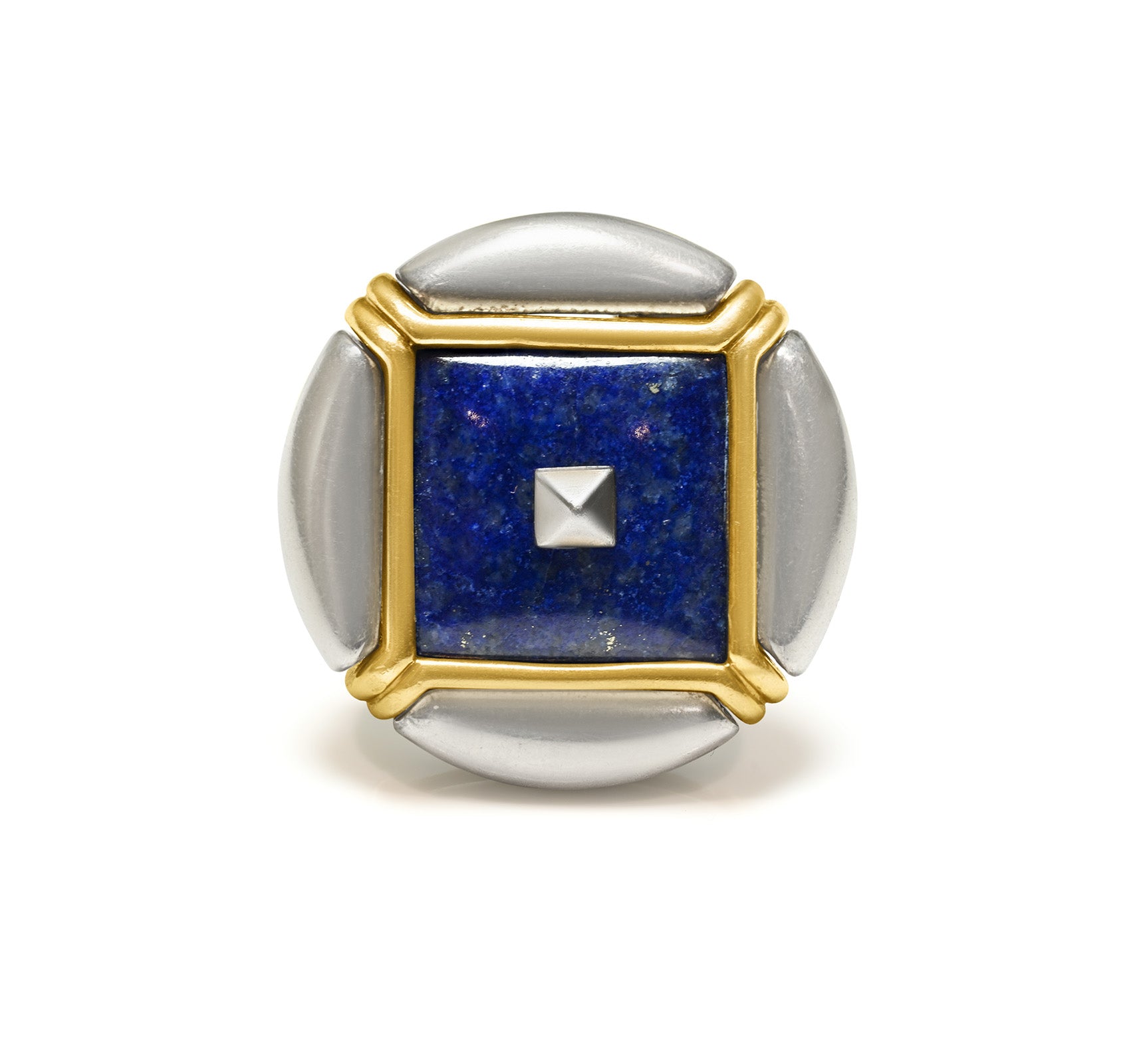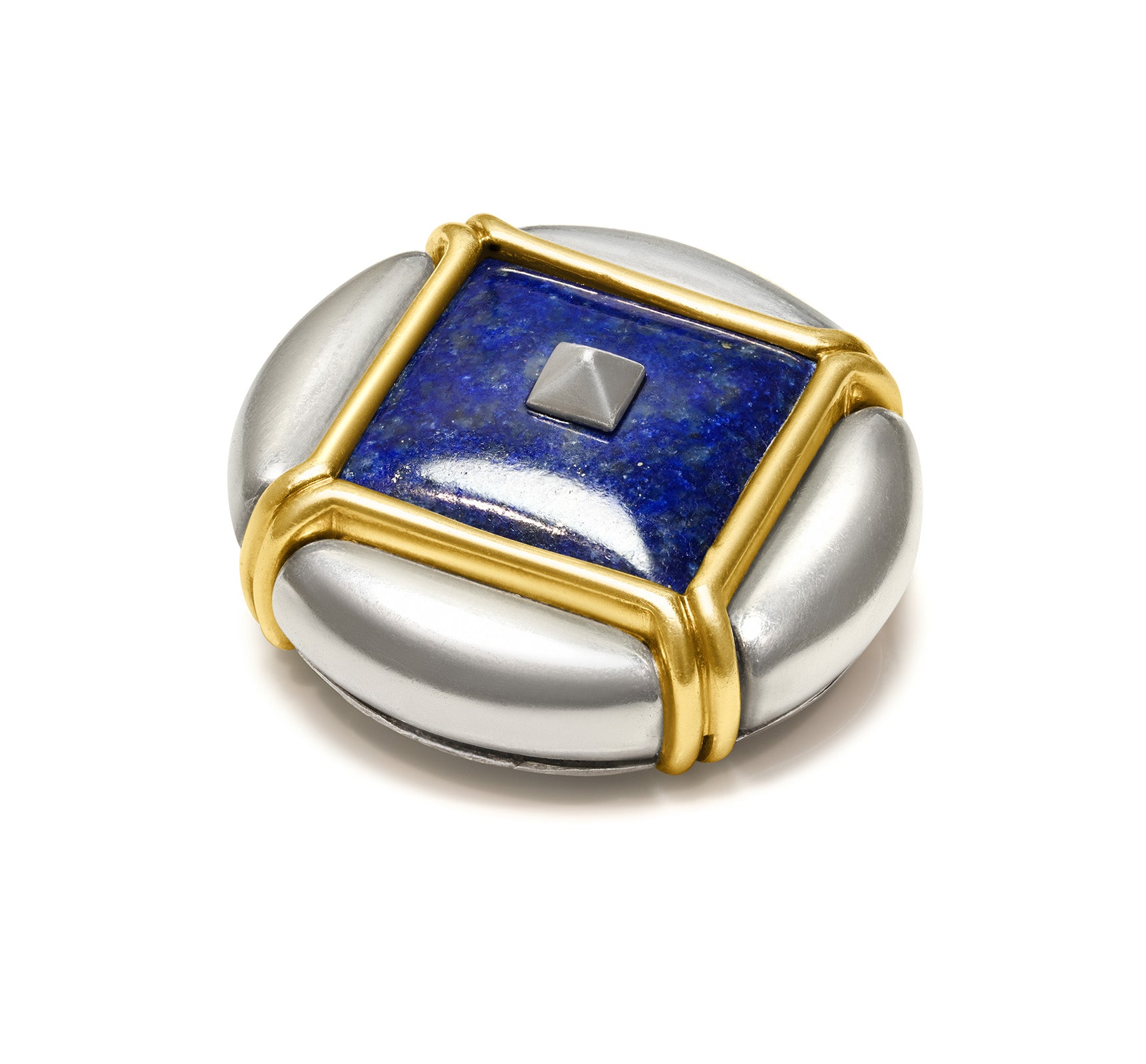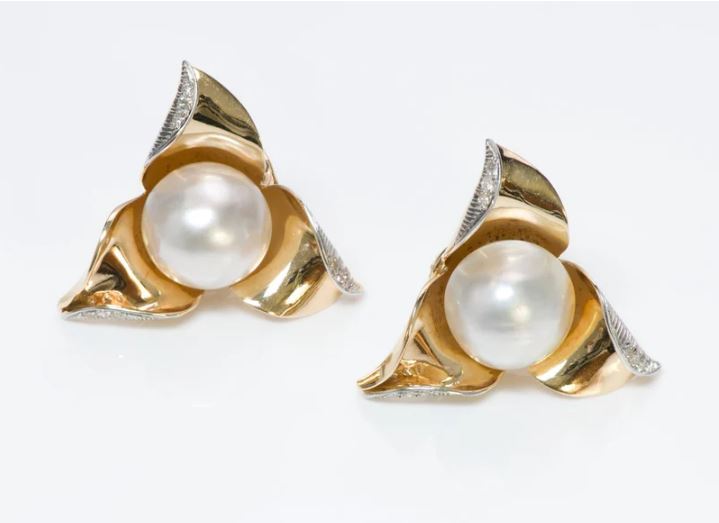
Trabert & Hoeffer: The Jewelry That Lit Up Hollywood
Trabert & Hoeffer, an iconic name in American jewelry, left an indelible mark on both high society and Hollywood, blending Old World elegance with modern glamour.
The 20th century was a golden age of innovation and artistry in fine jewelry, with legendary houses like Cartier, Van Cleef & Arpels, and Bulgari becoming symbols of luxury. Yet among these titans, one American firm stood out—Trabert & Hoeffer.
Known for its ability to fuse European sophistication with Hollywood dazzle, the house quickly became a favorite of collectors, socialites, and film stars.

Trabert & Hoeffer-Mauboussin Earrings - DSF Antique Jewelry
Founded in the early 20th century by R.J. Trabert and William Howard Hoeffer, the firm gained prominence for creating exquisite, historically inspired pieces that resonated with both royal heritage and contemporary glamour.
One of Trabert & Hoeffer’s most famous acquisitions was a pair of diamond earrings once owned by Catherine the Great of Russia.
These earrings, a stunning testament to royal refinement, were designed to reflect the empress's powerful yet elegant persona. Each featured an impressive drop-shaped diamond, expertly cut to maximize brilliance under candlelight—a necessity for 18th-century court life. Set in intricate gold and silver designs, they predated the widespread use of platinum, remaining true to the craftsmanship of the era.
Recognizing the storytelling power of jewelry, R.J. Trabert himself penned an essay, "The Story of These Resplendent Historical Earrings," which detailed their connection to Catherine the Great and the grandeur of her court.
This savvy marketing move transformed the earrings into a tangible link to imperial history, making them highly coveted by collectors. Trabert & Hoeffer’s approach mirrored a broader 1930s trend, where jewelers presented antique and royal treasures to the American elite, often pairing them with captivating narratives.
Alongside Black, Starr & Frost, Cartier, and Paul Flato, the firm played a pivotal role in reviving historical jewels, offering pieces once worn by royalty—such as Empress Carlota of Mexico's diamond and pearl earrings or Empress Eugénie’s diamond brooch.
This fascination with antique jewels educated the public on their historical significance and timeless allure, helping cement Trabert & Hoeffer’s reputation as one of the most influential jewelry houses of the era.

Early Beginnings and the Partnership with Mauboussin
Trabert & Hoeffer quickly ascended to prominence in the early 20th century. In 1936, the American house formed a strategic alliance with Mauboussin, the esteemed Parisian jeweler renowned for its exquisite craftsmanship and innovative designs.
This collaboration, formally named Trabert & Hoeffer-Mauboussin (T&HM), allowed the firm to merge French savoir-faire with American boldness, creating a brand with global appeal and Hollywood prestige.
The partnership ushered in a new era, characterized by opulent, statement-making designs that featured bold geometric forms, oversized colored gemstones, and intricate craftsmanship.
T&HM became synonymous with multi-functional jewelry that catered to an elite clientele, from European royalty to Hollywood’s biggest stars.

Trabert Hoeffer Mauboussin Ruby Emerald Sapphire Gold Christmas Tree Brooch - DSF Antique Jewelry
Hollywood’s Golden Age: The House of the Stars
T&HM’s influence in Hollywood was revolutionary. According to "If These Jewels Could Talk: The Legends Behind Celebrity Gems" by Beth Bernstein, the house was among the first jewelers to secure on-screen credits in films, an innovative marketing strategy at the time.
Its name debuted in The Gilded Lily (1935) and later gained prominence in The Vogues of 1938, where its iconic ruby bracelet became a centerpiece of the film.
Recognizing the power of Hollywood as a platform for luxury jewelry, William Howard Hoeffer expanded the brand’s presence by opening a Los Angeles branch in the mid-1930s. This move cemented T&HM’s reputation as the go-to jeweler for silver screen royalty, with Marlene Dietrich, Joan Bennett, and Katharine Hepburn among its high-profile patrons.
During the 1930s and 1940s, T&HM’s bold, glamorous designs became a perfect match for the era’s cinematic grandeur.
According to "Bejeweled: Great Designers, Celebrity Style" by Penny Proddow, the firm’s flashy, oversized creations were not merely accessories but narrative tools, playing symbolic roles in major films.
- In The Vogues of '38, Joan Bennett’s character wears a dramatic diamond panel necklace featuring an 83-carat cabochon ruby, symbolizing her boyfriend’s struggling fashion house’s salvation.
- In Stage Door, Eve Arden showcases opulent star sapphire jewelry, reflecting her character’s emotional highs and lows.
T&HM’s connection to Hollywood reached its peak when Marlene Dietrich adopted the firm as her unofficial jeweler. She famously adorned herself in their signature statement pieces, wearing them in films like Desire (1936) and Angel (1937).
These jewels became an integral part of her iconic image, appearing in Edward Steichen’s portraits and countless paparazzi photographs, further solidifying T&HM’s place in the history of cinematic luxury.

Trabert Hoeffer Mauboussin Gold Cufflinks - DSF Antique Jewelry
Trabert & Hoeffer Jewelry: The Glamorous Legacy of Marlene Dietrich
Trabert & Hoeffer’s creations epitomized Hollywood glamour during cinema’s Golden Age, and no one embodied their daring, sophisticated aesthetic more than Marlene Dietrich.
Renowned for her striking screen presence and bold personal style, Dietrich became synonymous with Trabert & Hoeffer-Mauboussin’s extravagant designs. The jewels she wore—both on and off-screen—remain some of the most legendary pieces in the house’s history.
The Cabochon Emerald Bracelet and Brooch Set
Among the most iconic creations associated with Trabert & Hoeffer is the stunning 128-carat cabochon emerald bracelet and its matching 97-carat brooch, both of which Dietrich wore throughout the 1930s.
These statement pieces, designed in collaboration with Mauboussin, featured colossal emeralds set in platinum, surrounded by shimmering diamonds, creating a look that was both opulent and avant-garde.
The cabochon-cut emeralds, with their smooth, polished surfaces, were designed for maximum impact, allowing their deep green hue and natural inclusions to shine under the lights of film sets and photography studios. Dietrich wore these spectacular jewels in two of her most celebrated films:
- Desire (1936): The emeralds added an air of opulence to her character, enhancing her sultry, enigmatic allure.
- Angel (1937): The jewels took center stage in the film’s promotional materials, further cementing their role in crafting Dietrich’s iconic image.
Beyond the silver screen, Dietrich paired the emerald bracelet and brooch with couture gowns, making them staples of her glamorous Hollywood persona. She frequently showcased them at film premieres, high-society events, and in portraits captured by renowned photographers like Edward Steichen and Clarence Sinclair Bull.
The 83-Carat Cabochon Ruby Necklace
Another standout from Trabert & Hoeffer’s repertoire was the 83-carat cabochon ruby necklace, famously featured in The Vogues of 1938.
Though modeled on-screen by Joan Bennett in the film’s climactic fashion show sequence, the necklace became closely associated with Dietrich’s extravagant style.
This vivid, sculptural creation exemplified the house’s bold aesthetic, featuring a massive central ruby, framed by diamond accents, in a design that reflected the daring, theatrical jewelry trends of the era.
The necklace’s glamorous journey continued when it was later acquired by Olympic skating champion and Hollywood star Sonja Henie, further solidifying its status as one of Trabert & Hoeffer’s most celebrated creations.
The Jigsaw Ring: A Masterpiece of Innovation
Trabert & Hoeffer’s ingenuity extended beyond aesthetics to functionality, pioneering the concept of multi-functional jewelry.
Trabert & Hoeffer-Mauboussin became renowned for its ‘jigsaw’ pieces, in which elements from a bracelet could be detached and placed in a ring, or a single necklace could be reconfigured into multiple brooches, pendants, and bracelets.
This versatility revolutionized high jewelry, offering both elegance and practicality. Among these innovations was a custom-designed ring for Marlene Dietrich, specifically crafted to hold one of her exquisite cabochon emeralds.
Dietrich’s daughter, Maria Riva, later described her mother’s remarkable emerald collection in her biography, recalling that "the largest was the size of a Grade A egg, and the smallest no smaller than a large marble."
According to Beth Bernstein’s book "If These Jewels Could Talk: The Legends Behind Celebrity Gems", Dietrich’s emerald ring gained even greater notoriety after her passing when her jewels were auctioned at Christie’s.
A particularly memorable story resurfaced from a dinner party at actress Katharine Cornell’s home, where Dietrich, while assisting in the kitchen, removed her 37.41-carat cabochon emerald ring before baking.
Hours later, after a frantic search by guests, the missing ring was unexpectedly found inside a piece of cake—a moment that turned the evening into an impromptu treasure hunt.
The Star of Bombay: A Legendary Sapphire
Though not worn by Dietrich, the Star of Bombay remains one of Trabert & Hoeffer’s most famous creations.
This 182-carat star sapphire, with its deep, luminous blue hue and exceptional size, was a gift from Douglas Fairbanks to his wife, silent film star Mary Pickford. Its extraordinary quality and mesmerizing asterism (star effect) made it one of the most celebrated sapphires in the world.

The Star of Bombay - Credit: Stickpen, Public domain, via Wikimedia Commons
Recognizing its historical and gemological significance, Pickford later donated the Star of Bombay to the Smithsonian Institution, where it remains one of the crown jewels of the National Gem Collection.
Dietrich’s Enduring Relationship with Trabert & Hoeffer
Dietrich’s love for Trabert & Hoeffer’s designs went beyond a single piece—she frequently collaborated with the house to create custom jewelry, ensuring her collection was as unique as her persona.
Maria Riva, in her mother’s biography, once again highlighted the significance of Dietrich’s emeralds, writing that the stones ranged from "the largest the size of a Grade A egg to the smallest no smaller than a large marble."
But beyond mere adornment, Dietrich’s connection to Trabert & Hoeffer was a partnership that shaped her legacy. The jewelry she wore was not just decorative—it was symbolic, a signature of her power, sophistication, and timeless glamour.
Trabert & Hoeffer’s designs played a defining role in establishing Hollywood’s relationship with high jewelry, setting a gold standard for celebrity adornment that remains influential to this day.
The Reflection Line: Democratizing Elegance
While Trabert & Hoeffer-Mauboussin was synonymous with high jewelry, it also sought to make luxury more accessible. Recognizing the economic challenges of the Great Depression, the house introduced the Reflection line, a revolutionary collection designed to bring fine jewelry to a broader audience.
Unlike fully bespoke pieces, Reflection jewelry allowed clients to customize pre-constructed elements, selecting their preferred gemstones and configurations to create a piece that reflected their personality.
Marketed with the slogan "Your personality in a jewel,” the line captured the spirit of the era—blending affordability, individuality, and elegance. By balancing exclusivity with inclusivity, Reflection became a defining moment in Trabert & Hoeffer’s legacy.
The line resonated not only with Hollywood’s elite but also with everyday Americans, making high design more attainable without sacrificing craftsmanship.
Other Celebrities Who Wore Trabert & Hoeffer
Jewelry While Marlene Dietrich was the house’s most famous muse, many other stars and socialites were drawn to Trabert & Hoeffer’s bold, glamorous designs.
- Claudette Colbert showcased Trabert & Hoeffer’s jewelry in The Gilded Lily (1935), marking the first time the jeweler received an on-screen credit for their work.
- Sonja Henie, the Olympic skating champion turned actress, acquired the 83-carat cabochon ruby necklace after its appearance in The Vogues of 1938, incorporating it into her personal collection.
- Ann Warner, wife of Warner Bros. studio head Jack Warner, was often photographed wearing a cabochon emerald pendant necklace by Trabert & Hoeffer at Hollywood’s most prestigious events.
- Lili Damita, wife of Errol Flynn, was another socialite who adorned herself with the house’s glamorous, statement-making designs.
Cultural Icons and Figures
Beyond Hollywood, Trabert & Hoeffer’s artistry attracted figures from the worlds of opera, aristocracy, and high society.
- Merle Oberon, the celebrated British actress, amassed a collection of Trabert & Hoeffer-Mauboussin jewels, including a multi-functional ‘jigsaw’ necklace that could be transformed into various pieces.
- Lucrezia Bori, the legendary opera singer, received the currant-leaf diamond brooch, which was originally part of the French Crown Jewels. The brooch was sold to the Metropolitan Opera’s box holders by Paul Flato, a jeweler closely associated with Trabert & Hoeffer during the era.
Trabert & Hoeffer’s impact extended far beyond Hollywood, shaping the visual language of glamour in film, fashion, and society. Their legacy lives on through the exquisite, historic pieces that continue to captivate collectors and connoisseurs alike.
A Story of Glamour
The influence of Trabert & Hoeffer-Mauboussin (T&HM) extended beyond Hollywood’s silver screen into the world of high society. Its designs graced the collections of Ann Warner, the wife of Warner Bros. studio chief Jack Warner, and Sonja Henie, the Olympic champion-turned-Hollywood star.
Known for bold cabochons, dazzling diamonds, and an unmistakable sense of drama, T&HM’s creations reflected the optimism and grandeur of the pre-war era. However, World War II brought new challenges. As the jewelry industry pivoted toward wartime production, luxury craftsmanship took a backseat.
After the war, T&HM struggled to reclaim its former dominance. By the 1950s, William Howard Hoeffer retired, selling the business, and in 1954, Mauboussin reclaimed its name, marking the end of the T&HM era.
Enduring Appeal
Though Trabert & Hoeffer-Mauboussin is no longer active, its legacy remains firmly intact. The house’s historic creations—from Marlene Dietrich’s legendary emeralds to the Star of Bombay sapphire—continue to be highly sought after by collectors and connoisseurs, treasured for their artistry, innovation, and historical significance.
Beyond its jewelry, T&HM’s pioneering role in Hollywood shaped the relationship between fine jewelry and film. It set the precedent for: On-screen jewelry credits—now a standard in luxury collaborations.
Jewelry as a narrative device in cinema, enhancing characters and storylines. Even decades after its dissolution, Trabert & Hoeffer remains more than just a jewelry house—it is a cultural phenomenon that left an indelible mark on jewelry design, entertainment, and high society.
In a world where trends fade, the legacy of Trabert & Hoeffer-Mauboussin endures as a testament to the power of craftsmanship, creativity, and glamour.
Whether displayed in museum collections, worn by collectors, or gracing vintage Hollywood portraits, its masterpieces continue to captivate and inspire generations.

